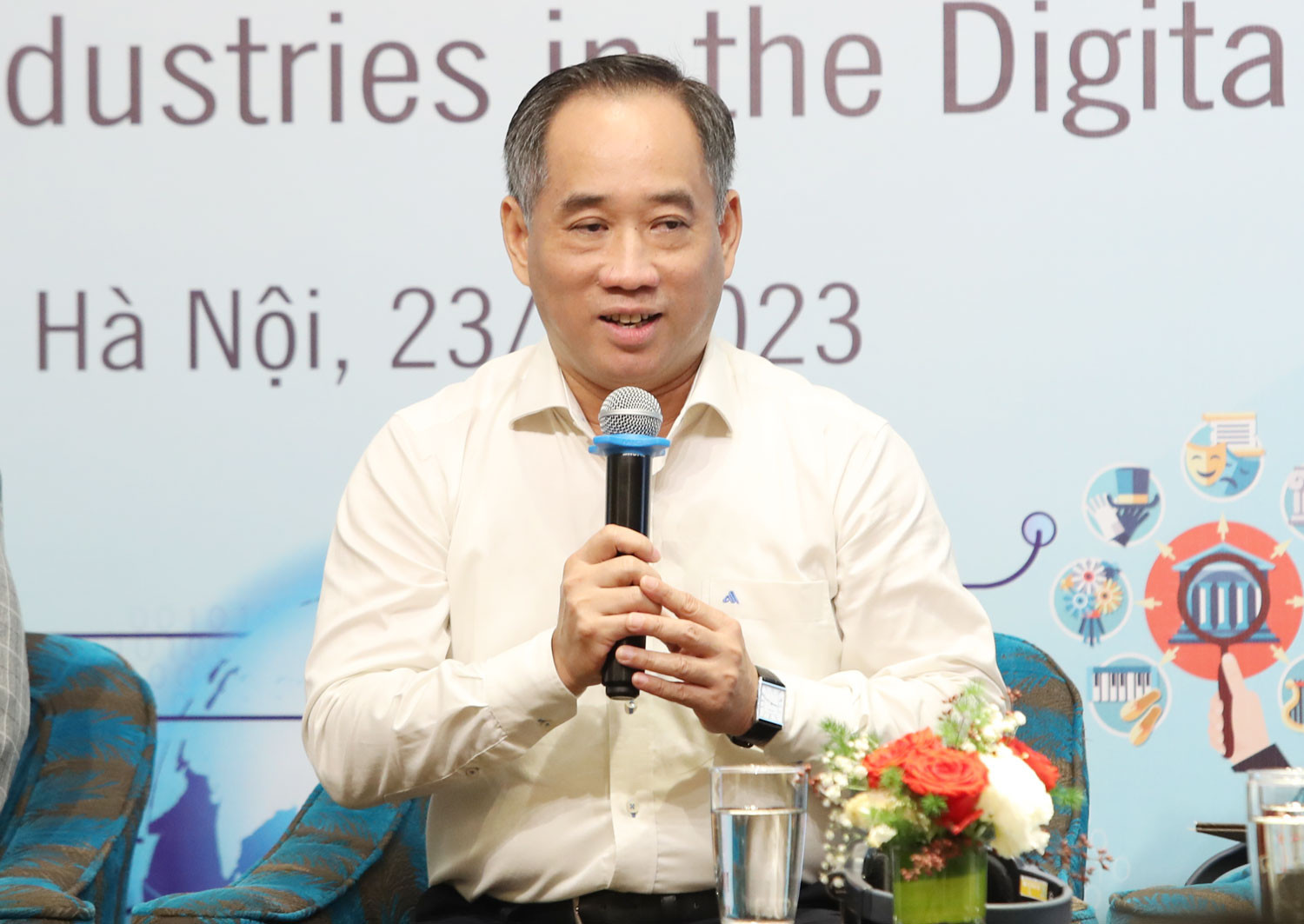
The Vietnam Fine Arts Museum is a unit featuring fine art works in the digital environment, and a place for many domestic and international visitors. Dr Nguyen Anh Minh, director of the museum, said it stores many valuable artworks of Vietnamese art, but the museum was not an interesting destination in the past.
It attracted 50,000 visitors each year, a modest figure. Of this, 90 percent were foreign travelers, while the remaining 10 percent were Vietnamese, and most of them were researchers or those interested in the fine arts.
“Tour guides were afraid of leading travelers to the museum because they didn’t know how to give presentations. The number of visitors to the museum was modest,” Minh said. “In such conditions, using technology was a solution."
In 2017, the head of the museum decided to carry out a renovation, and digital technology helped do this.
“We built a plan with innovations and submitted it to MCST. This was an unprecedented project because we suggested investment under a private public partnership. MCST had to find a reasonable policy, while we were in charge of heritage and displayed items, and the private partner will provide technology and operate the museum,” he explained.
In 2021, the multimedia presentation project product with eight languages made its debut, and a product with nine languages will come out soon, which will allow visitors to experience the museum anywhere.
In the first year, revenue from online visitors was VND600 million, which pleased the staff who were also happy that cultural and historical values were introduced to large audiences.
“After one year of implementing the project, the number of visitors to the museum increased by twofold and we expect further increase this year. The success is attributed to PPP (private public partnership), which means benefits for all involved parties,” he said.
Using AI in the creativity industry
The cooperation between businesses and the state is also a concern of musician Quoc Trung. To perform a musical work, singers have to get the nod from the censorship council, which is a big waste of time. The problem needs to be solved by technology.
However, Trung stressed that there is no AI that can undertake the work of censorship in Vietnam, because the Vietnamese language has many meanings and the deduction may lead to serious consequences.
Khong con mua thu (No more autumn) is a well-known song. ‘Autumn’ here means ‘revolutionary autumn’. If someone interprets that ‘no more autumn’ means ‘no more revolution’, this would be dangerous.
Therefore, to solve the problem according to Trung, it is necessary to build a relation between businesses and the state which strives for the same benefit – the development of the culture industry.
He went on to say that the culture industry can utilize AI, but creative capability cannot be generated by any AI. Therefore, the abuse of AI in the creative industry won’t be sustainable.
Ngo Thi Bich Hanh, CEO of BHD, thinks Vietnam can learn South Korean culture policy as the country has some similarities with Vietnam.
She put emphasis on the need to protect intellectual property when developing the culture industry. When BHD distributed the movie Co Ba Sai Gon (The Tailor), a young man filmed and spread the product on unlicensed websites right after the first day the movie hit the screen. The man was then fined VND3 million.
“If someone steals a motorbike, he may be sent to jail. Meanwhile, the man who infringe the intellectual property worth millions of dollars only had to pay several millions of VND in fines,” she said.
“It is necessary to consider intellectual property and the products of culture industry as the assets which can be valued. This is the root for the development of the culture industry,” she said.
Tinh Le